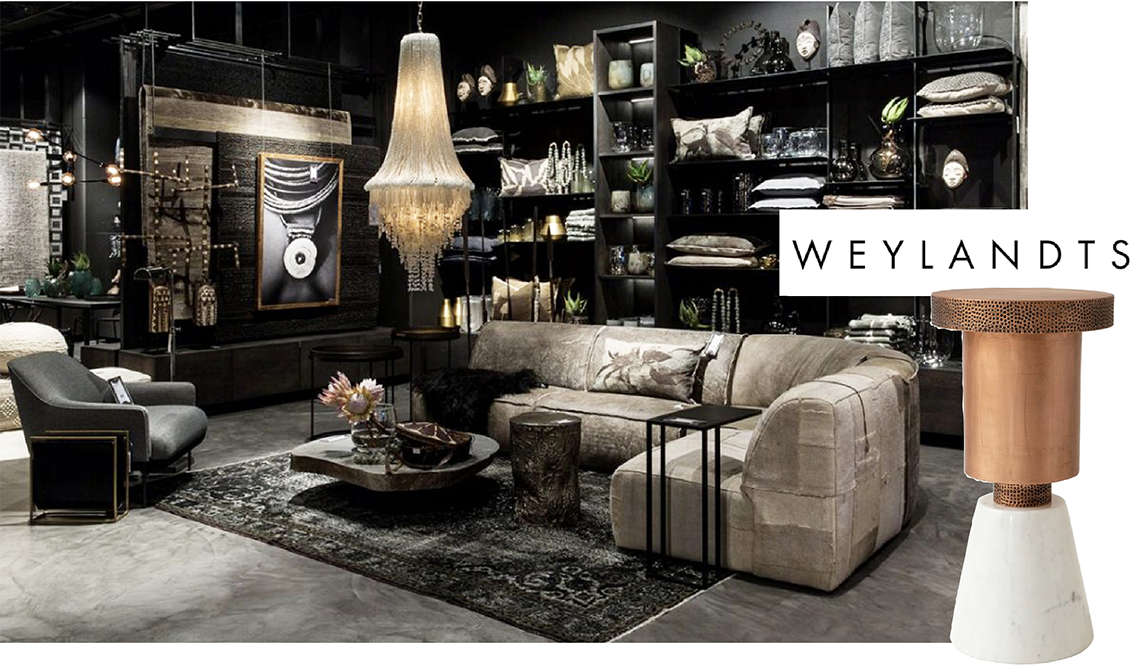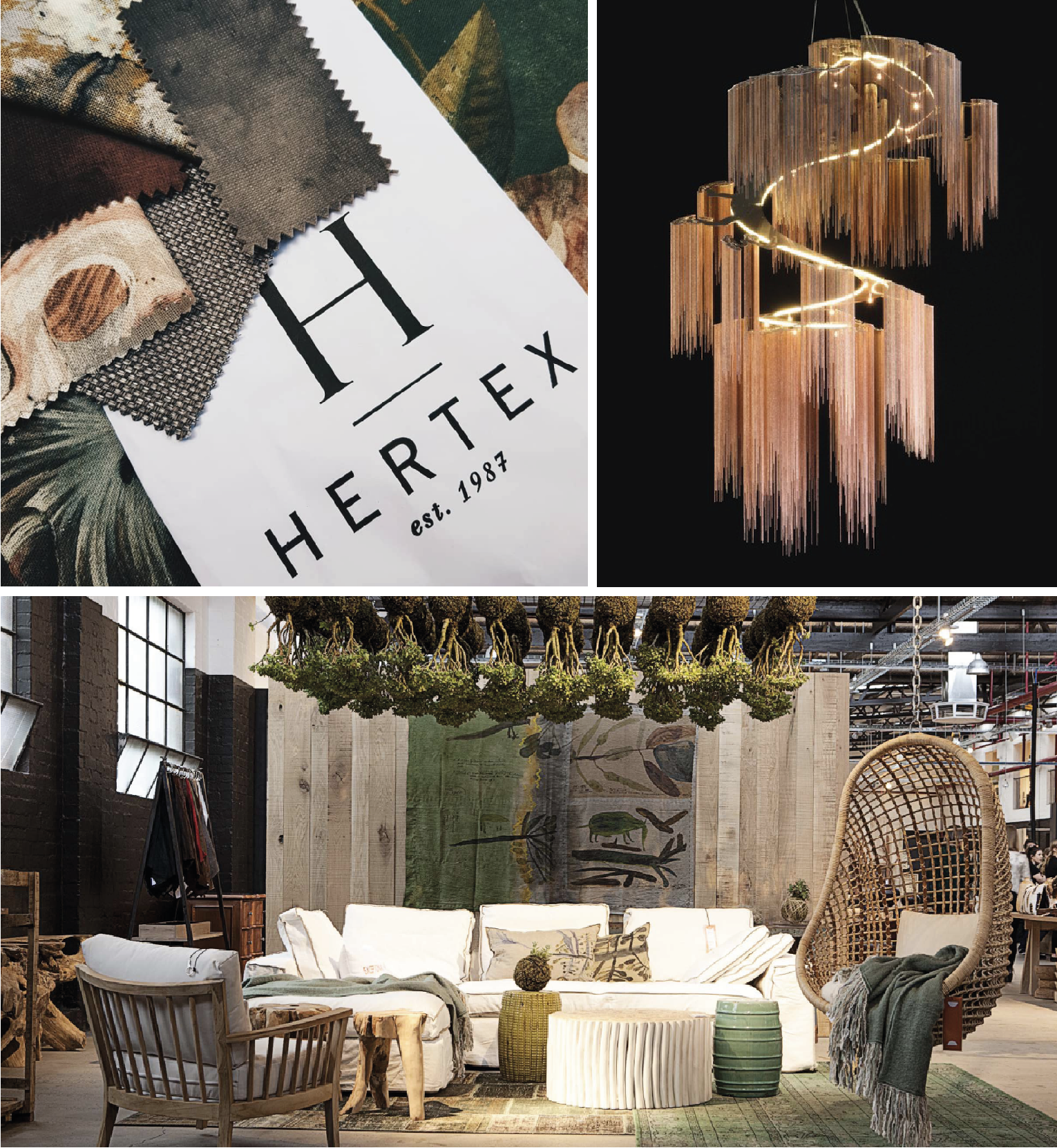Predicting A Growth Strategy For Weylandts (23/04/19)

Weylandts is a family-owned and much loved South African furniture and homeware brand. Since (second generation) stakeholder Chris Weylandt joined the organisation in the 1990s it has grown tremendously. There's room for further expansion and the brand's consumer resonance suggests extension strategies would be best suited to this growth. (Images: www.weylandts.co.za; graphic: Martin Jacobs)
When looking to grow as a brand, an organisation has the choice of implementing four possible strategies – launching new brands, brand extensions, multi-brand and endorsement strategies. Each comes with risks and benefits that the organisation needs to consider before deciding which is most appropriate. Often these strategies overlap or work best when combined. A market expansion grid therefore provides a helpful tool for identifying which strategies focus on developing new brands (independent of the influence of a parent brand), and which rely on consumer brand recognition and reputation.
Weylandts is a local homeware brand with an excellent reputation. Leveraging this should be key to its growth plan, thereby excluding new brand launches as a suitable strategy. Weylandts offers its consumer a curated aesthetic, with on-trend furniture and homeware. One of the brand’s greatest advantages is that it occupies a price point that is largely unrivalled, resulting in a loyal audience. But given the strength of its reputation, its corporate growth to date has evolved with some timidity, and I believe extension strategies will be most beneficial to future growth for they rely on consumer brand recognition and reputation, both of which Weylandts has in ample form.
Multi-brand Strategy
In excluding a multi-brand (or flanker) strategy, it’s important to understand that this is generally more applicable to larger organisations with multiple products across categories. One of its major advantages is that it affords the organisation the opportunity to target a variety of price and quality points in a product category, thereby reducing the awareness of competitor products. Implementing this strategy would require Weylandts to launch and market a secondary brand under a different name, yet still within homeware. Whilst doing so would afford Weylandts the opportunity to experiment, this could result in possible internal and consumer brand confusion. Also at risk is Weylandts’ reputation, for this strategy leaves Weylandts open to criticism should the new brand falter.
Endorsement Strategy
For similar reasons, an endorsement (or nested) strategy is unsuitable. Again, it is more appropriate to a conglomerate seeking to launch new and unique products into a different product category, whilst retaining some affiliation to the parent brand. Were Weylandts to adopt this approach, its brand reputation would boost the launch by reducing purchase barriers for the consumer, but Weylandts would be secondary to the product brand name.

Weylandts has thirteen stores in major cities across South Africa. Given the brand's unique positioning in the homeware market, the brand has earned a strong reputation. This should be leveraged in growing the organisation. (Image: www.africanism.net)
Extension Strategies
Line, brand, concept and co-branding extension strategies recognise the strength of a brand’s reputation, and leverage it in growing the organisation. These being most suited to Weylandts, it would be critical for the brand to understand how the extensions will add value to the consumer as well as to Weylandts itself. Whilst such strategies may be more affordable than launching a new brand, they also directly affect reputation. Weylandts’ existing brand equity should not be compromised when implementing these extensions. Therefore, growth through these strategies must remain true to the vision and values of Weylandts and align with its corporate identity.
Line extensions would allow Weylandts to refine, or add new product to, existing product ranges. This would be an economical way for Weylandts to engage with its existing consumer, and in so doing to reinvigorate the market and drive an increase in turnover. One of the limitations of Weylandts’ furniture (for the most part oversized) is that it predominantly caters to consumers living in spacious homes. A line extension would allow for a range of more compact furniture (particularly sofas, armchairs and tables), and would be a vertical extension that could appeal to both an existing audience, and a new market.
Given the popularity of Weylandts’ homeware, it may opt to target its existing market with a new product, in a new category, and through a corporate brand extension. Were Weylandts to launch a range of linen retail stores, for example, that incorporate its name, it would be leveraging the brand’s reputation in engaging with existing consumers, who would appraise Weylandts’ linen offering in relation to core values of the parent brand.
Weylandts has previously implemented a diversification strategy through a concept extension, in the form of Maison Estate. Whilst both the homeware stores and the estate fall within the lifestyle sector, the link between homeware and fine dining is perhaps too tenuous for some consumers, and the organisation’s entry into an entirely different product type has met with mixed consumer responses, yet not affected overall brand reputation.

Co-branding possibilities would offer Weylandts the opportunity to strategically partner with any number of local homeware brands. Hertex (top left) and lighting company Willowlamp (top right) have brand aesthetics that would work harmoniously with those of Weylandts (bottom). (Images: www.hertex.co.za, www.willowlamp.com, www.anplusa.com )
Finally, co-branding, through an alliance with another organisation with an aesthetic similar to that of Weylandts, would be a sensible strategy for Weylandts to implement. Imagine a tactical partnership with Hertex Fabrics that results in upholstered furniture product, or a similar union with local designers Willowlamp on a lighting product. Both possibilities would allow for Weylandts to extend its brand portfolio in a faster manner than that of internal product development, both would result in consumer perception of an increase in quality and production values, and both would enhance the organisation’s reputation by fostering the notion that it supports local design.
In conclusion, I believe that extension strategies are most beneficial for Weylandts in predicting its corporate growth. The organisation’s vision is one that includes the promise of contemporary design fused with natural materials. Having earned a reputation for delivering on such promises, Weylandts’ future growth plan should heavily leverage not only this reputation, but also its unique position within the furniture and homeware market – and build on that. Extension strategies would allow Weylandts to build its brand and reputation further, whilst limiting expenditure and marketing costs, important considerations for a family-run organisation.
Martin Jacobs
(module 8, assignment 8.6)

Weylandts' ambitious concept extension, Maison Estate in Franschhoek, offers fine dining and wine tasting. Both this and the homeware stores exist in a lifestyle sector, but the brand link can be regarded as tenuous, especially given that Franschhoek draws many foreign tourists whose familiarity with Weylandts may be limited. (Image: www.maisonestate.co.za)
Bibliography:
Comments
Post a Comment